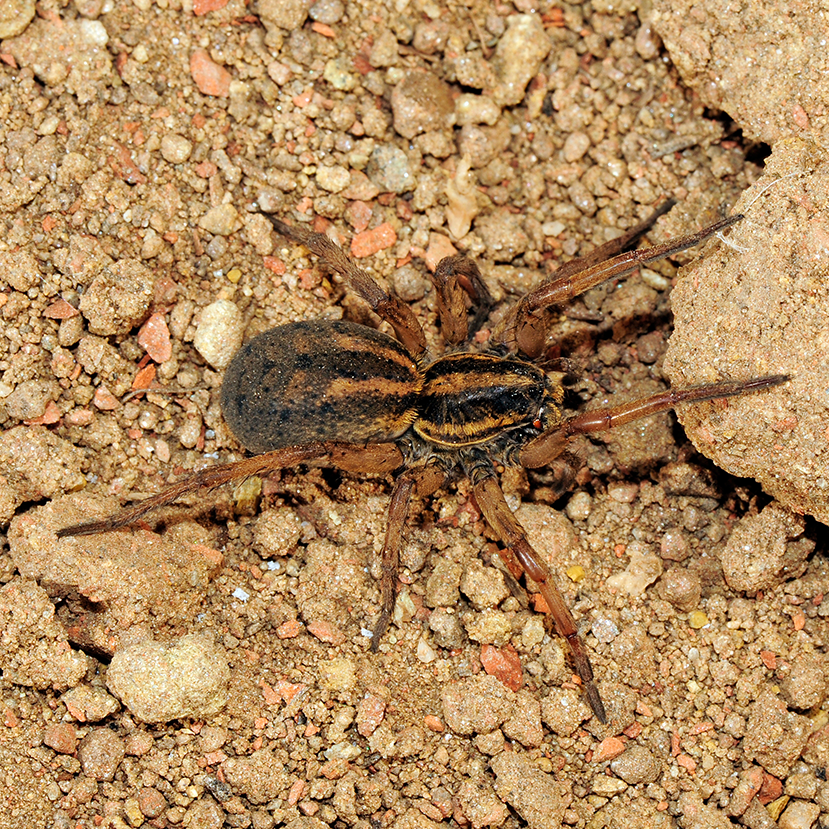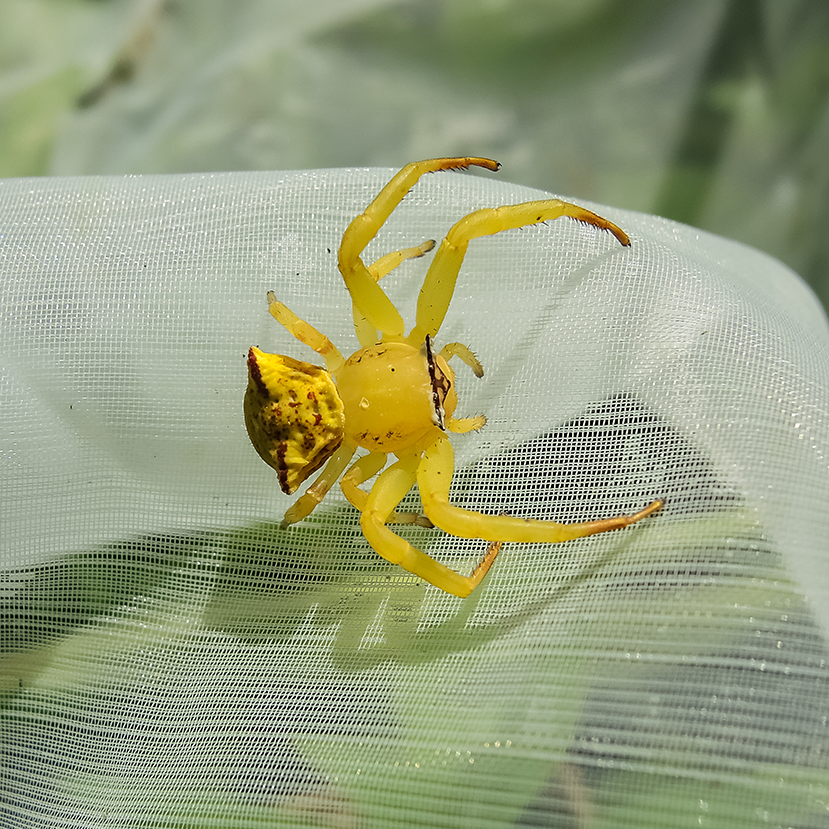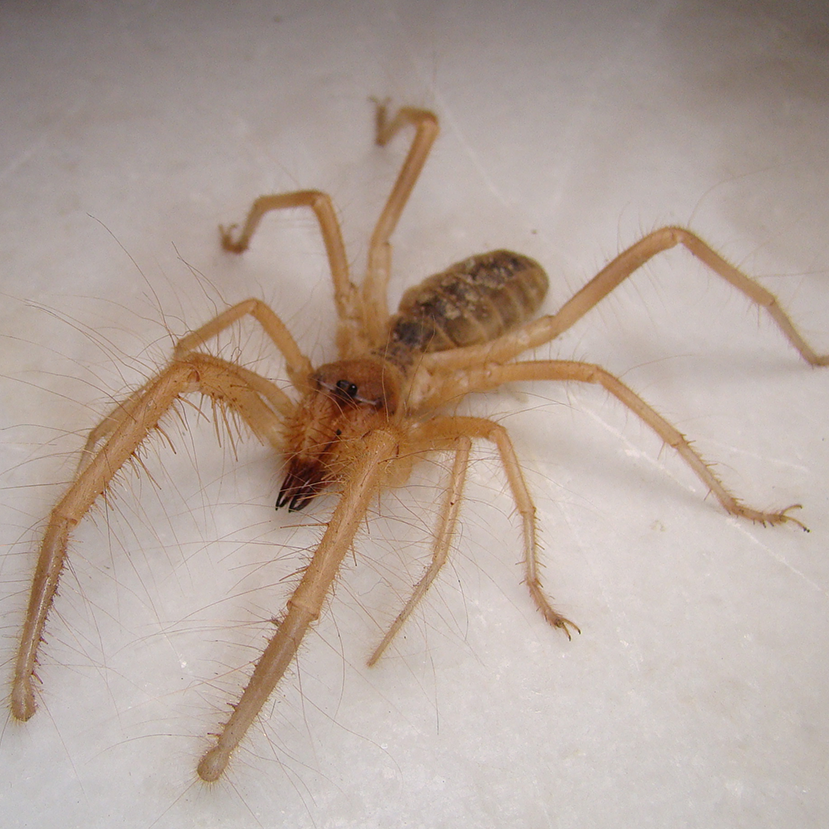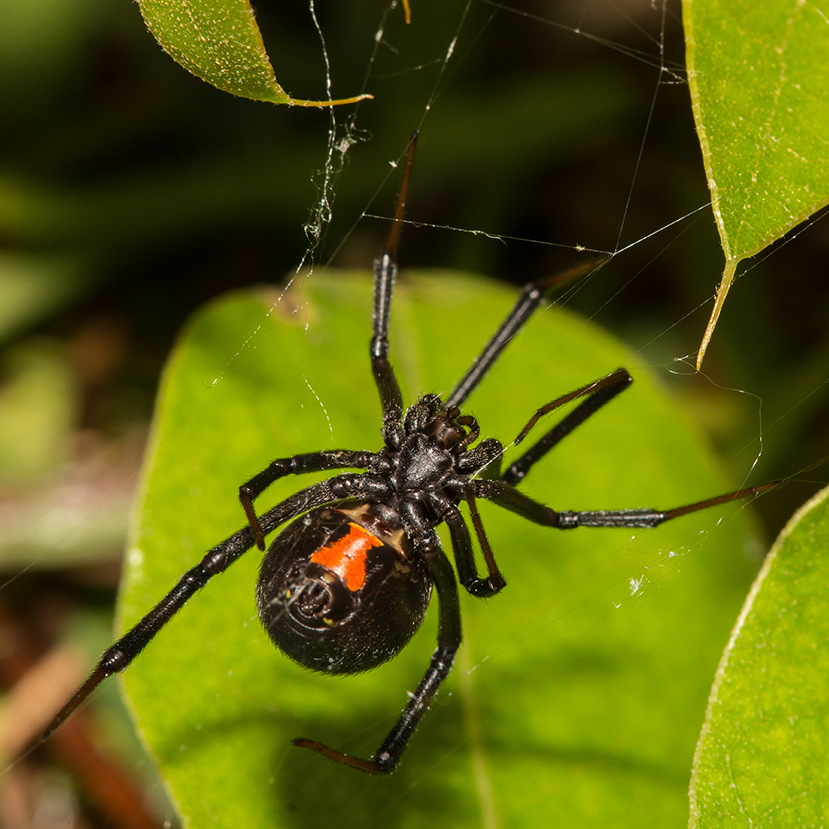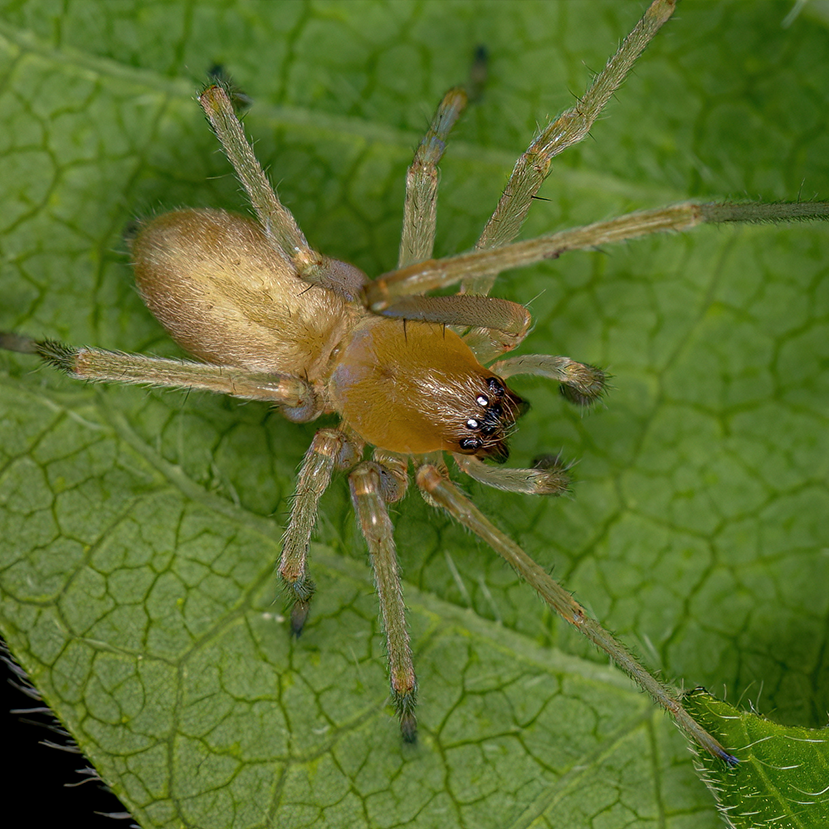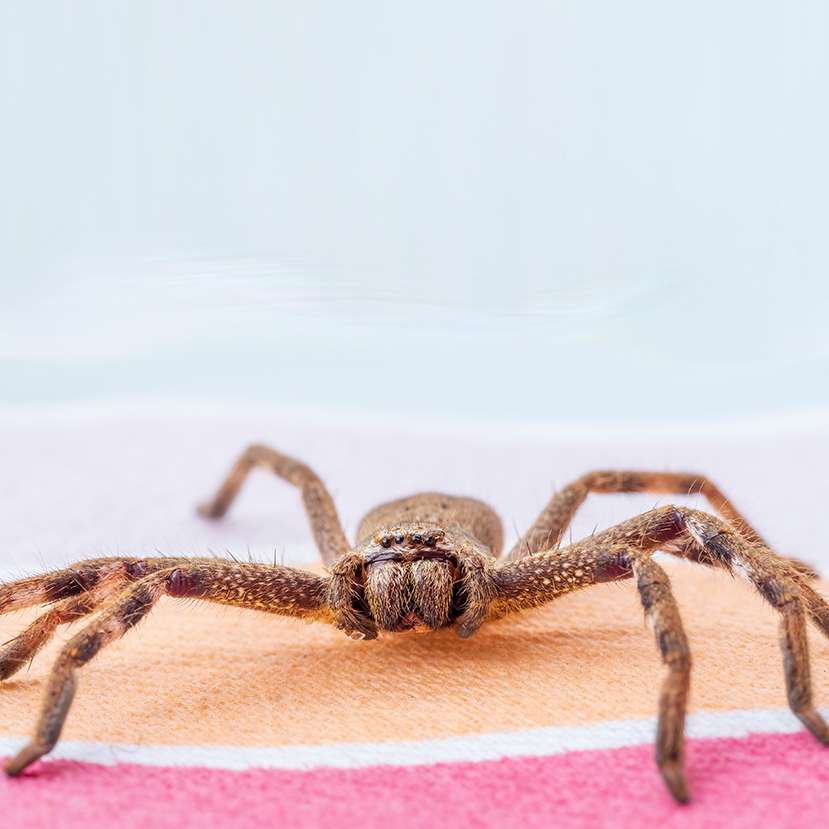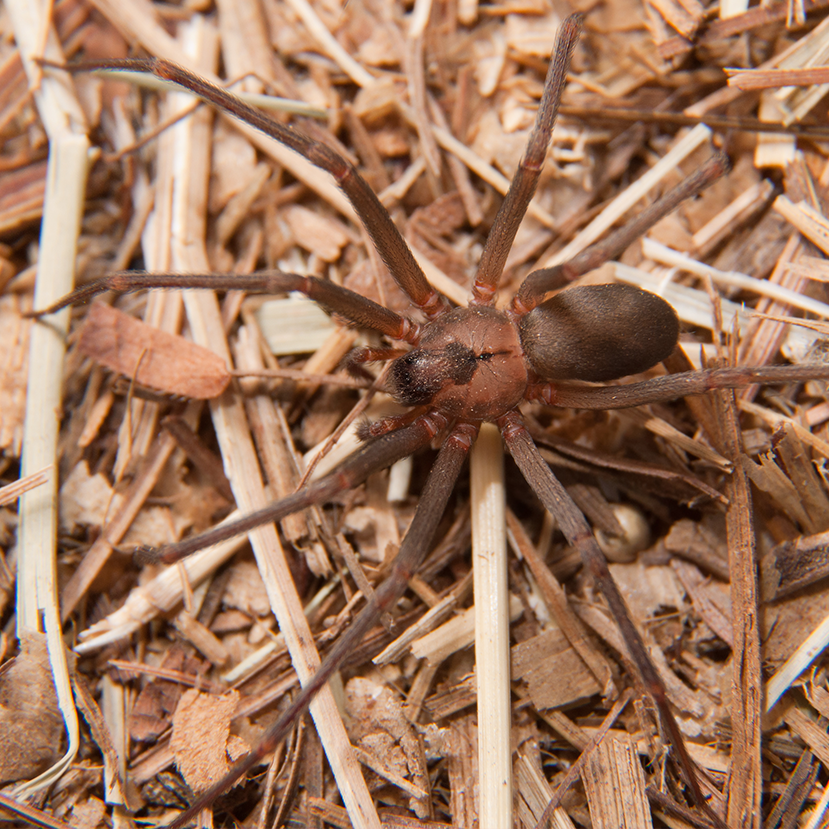7 Common Spiders in South Africa & How to Keep Them Out

Arachnophobia, or the fear of spiders, is fairly common. The leading theory on why this is so commonplace is that our ancestors evolved to fear spiders in order to stay alive, and that fear has carried over through to modern-day humans.
The reality is that most spiders in Southern Africa aren’t dangerous spiders. In fact, they’re important for our ecosystem, making sure that insect populations remain under control. But that doesn’t mean we want them in our households.
With this in mind, let’s look at some of the most common South African spider species you may encounter at your home or commercial space, and how to keep them outside where they belong.
1. South African Wolf Spider
Despite the scary-sounding name, the South African wolf spider is harmless to humans and pets, and they rarely try to bite. They’re typically quite small—not even the size of a R5 coin. They’re commonly found in gardens and seldom in the home, so you don’t need to worry too much about this arachnid crawling into your house.
If you’re worried that these critters are taking over your garden and that you may have an infestation on your hands, you can call in the experts. Our specialised pest control teams can help assess the situation and provide you with the best solution for your situation.
2. African Yellow Crab Spider
Despite this rather frightening-looking spider, the crab spider is harmless to people and pets. It comes in a variety of colours, including yellow, blue, and white. Their profile is broad and with their eight legs clumped together to help them camouflage themselves.
They’re not usually found in homes, preferring rather to live on flowers that match their colours and in veld areas. If you are worried about an infestation of this kind of spider, our specialist teams in your area are ready to assist and advise you.
3. Red Roman Spiders
Red romans go by many names—sun spider, Kalahari Ferrari, and solifuge. There are over 1,000 species of this type found all over the world, including South Africa. They’re diurnal and nocturnal, meaning they can hunt in both the daytime and at night. Despite the name ‘sun spider’, they dislike sun and prefer to run into shade.
Is this an aggressive spider? No, but If you ask someone in South Africa who has come into contact with it, they may say yes. This is because it can seem like they’re running towards you, but in reality, they’re probably running for your shadow. They’re completely harmless, with a non-venomous bite which would feel more like a nip.
If you’re finding too many of this type of spider in your home or on your commercial property, contact Mostert Pest Control today, and we can assist with spider control measures.
4. Black Widow Spiders
Also known as button spiders, black widow is a name that drives fear into the hearts of many arachnophobes. This spider has a neurotoxic venom that requires victims to be hospitalised as soon as possible and treated with anti-venom. With this in mind, it’s just the females you need to worry about, as their fangs are long enough to pierce human flesh.
They have a characteristic red hourglass-looking mark on top. They’re often found in woodpiles (and may end up in homes by accident by being carried in with these), as well as in any dark, sheltering place such as boxes, Wendy houses, unused blankets and shoes, and crevices in decks and patios.
The best way to keep them out of your house is to keep your home neat and tidy, along with outside areas, fix cracks, seal openings, and install door sweeps to minimise entry into the home. If you’re noticing an abundance of these critters in spaces where they don’t belong, like on your stoep or in your office cafeteria garden, it may be time to call in the professionals. We’re here to help with just about any species of spider you may be worried about.
5. Yellow Sac Spiders
Sac spiders are usually found in plants and houses. They get their name from the silk sac they build under which they hide their eggs. They’re either cream-white to pale yellow or even a reddish-brown with a black or dark area around the mouth.
They’re considered to be medically important, which means sac spider bites can do damage to a human with its cytotoxic venom. Untreated, wounds can go necrotic, meaning the cells in the tissue die. The only way to treat this is to go on antibiotics, so if you’re bitten by one, be sure to visit your doctor.
The best way to keep them out of your house is to make it difficult for them to enter at all. That means using caulk to close up small gaps that make for possible entry points. If it’s too late, and you’re finding them inside your buildings or dropping from the ceiling, don’t worry. Just call our expert exterminators to help sort out the infestation for you. Ass one of South Africa’s leading pest control companies, we know we have what it takes to sort out the problem fast.
6. Common Rain Spiders
Rain spiders in South Africa are often thought to be completely harmless, but they can, in fact, inflict quite a painful bite. They’re quite large—up to about 10cm—and are commonly found in homes in curtains or ceiling corners, especially after it rains (hence the name). They can resemble some species of baboon spiders, except that they have longer, skinnier legs. They’re brown, with white and black markings underneath their legs.
These spiders are ambush hunters, meaning they do not spin webs. Instead, they hunt insects, and have even been known to hunt spiders and lizards. Although their bite can be painful, you’re not likely to experience it, since they rarely bite, unless you’re dealing with a female in her nest. The bite is sore in the beginning, but becomes itchy with time and symptoms fade within a few hours. It is not deadly.
To discourage them from entering your house, you can spray windows, doors, and bricks around entryways with citronella. If a rain spider is holding your curtains hostage, our experts are more than willing to assist. Give us a call today.
7. African Violin Spider
Violin spiders are ranked as ‘medically important’ by the African Snake Bite Institute, meaning that their bite contains a cytotoxic venom which can lead to tissue damage. In other words, if you get bitten by one, go to the doctor, clinic, or hospital as soon as possible.
Having said that, don’t be too scared—there are no recorded deaths from violin spider bites. They’re also shy of humans and tend to run off when a person comes near. They’re mostly found in houses and garages in dark areas and under possessions. So to keep them out, keep a neat and tidy home and garage.
If you are finding these in too large numbers for your comfort in your storage spaces or living spaces, you can contact our expert pest control teams to assist with the issue.
Help Me Get Rid of Spiders, Please.
If you’ve got a spider problem in your home and aren’t sure how to deal with it, you can get a free quote on our website or call or email us. We have specialists throughout South Africa that know how to deal with each species, either relocating them to natural habitats, exterminating, fumigating, or more. Our specialist pest controllers have the know-how and experience needed to keep every type of spider away from your home or office using methods that are the best option for each situation.

